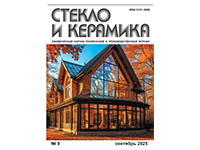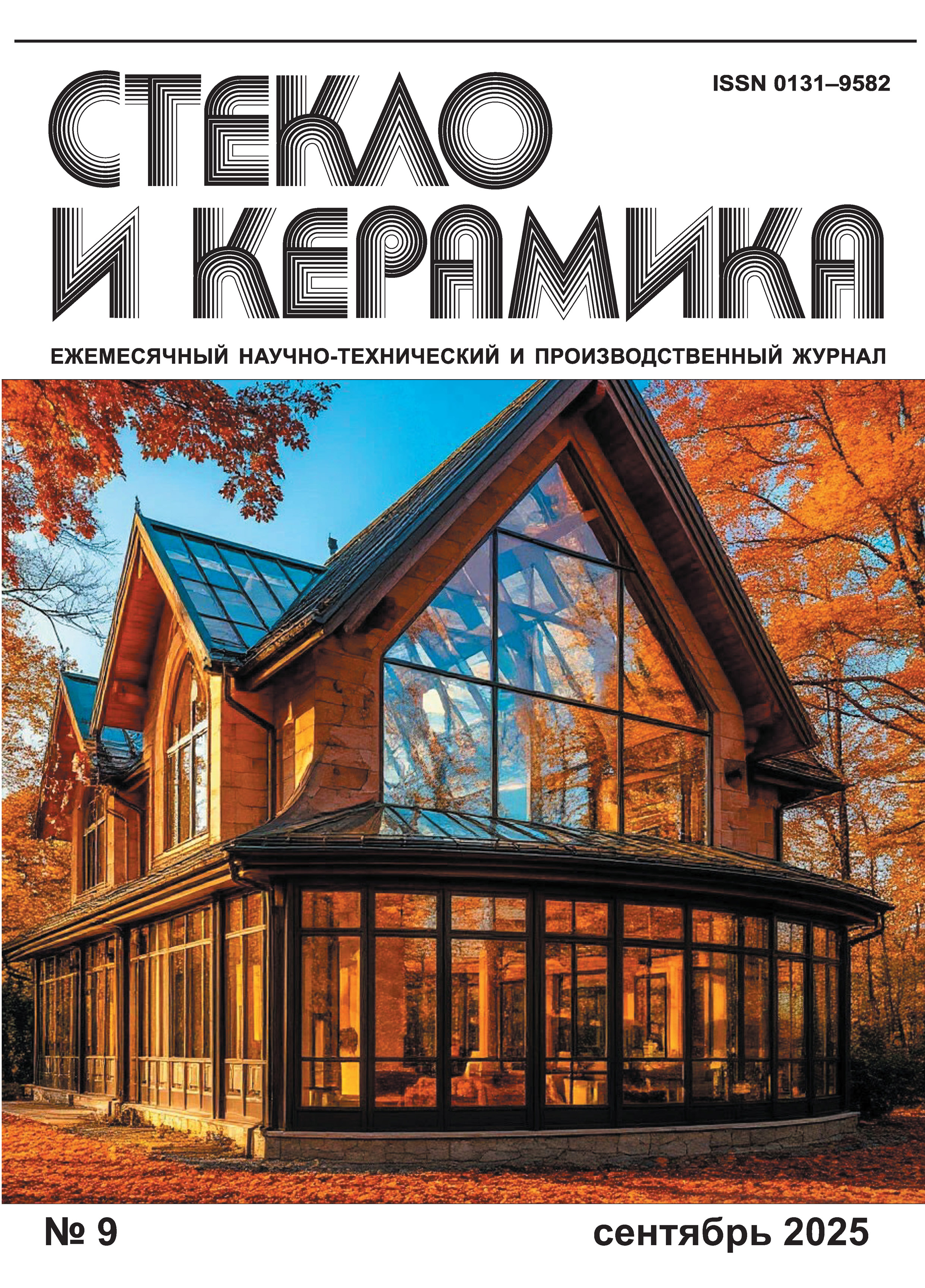Господдержка предприятий-производителей строительных материалов

Dear colleagues!
Viktor Osipov, President of the Association "StekloSouz" of Russia, is a member of the editorial board of the "Glass and Ceramics" journal.
We are pleased to announce that issue 9 of the monthly scientific and technical journal "Glass and Ceramics" for 2025 has been published.
![]() Contents of the September issue:
Contents of the September issue:
- OPTICAL PROPERTIES OF HIGH-PURITY SYNTHETIC QUARTZ GLASS AFTER SATURATION WITH MOLECULAR HYDROGEN
This paper presents the results of annealing high-purity synthetic quartz glass at 250°C and an elevated pressure of 7 MPa in a molecular hydrogen atmosphere. Annealing under these conditions increases the transmittance at a wavelength of 190 nm by 2%. The absorption of quartz glass in the range from 238 to 254 nm corresponds to defects in its structural network, specifically transitions of silicon oxygen-deficient centers of non-bridging oxygen, which are deactivated by atomic hydrogen to form stable hydroxyl groups Si–O–H, which in turn reduces absorption in this region. Using Fourier transform infrared spectroscopy, it was established that the diffusion of molecular hydrogen produces a peak in the wavenumber range from 4200 to 4100 cm–1, which corresponds to molecular hydrogen dissolved in the structural network of quartz glass.
- TREATMENT OF LEAD-SILICATE GLASSES WITH HYDROGEN PEROXIDE
The surfaces of lead-silicate glasses and unetched microchannel plate blanks were studied after their mechanical processing. It was found that soaking the obtained samples in a 33% H2O2 solution resulted in increased optical transparency with a corresponding decrease in their mass. These results are explained by the removal of organic and organosilicon layers from the surface that formed during mechanical processing.
- A COMPREHENSIVE STUDY OF KUSHKUPYRSKOE DUNE SANDS FOR THE PRODUCTION OF SODIUM SILICATE IN A MICROSILICA–DUNE SAND–CAUSTIC SODA SYSTEM
The chemical and mineralogical composition, grain structure, and physicochemical properties of unprocessed dune sands located in the Kushkupyr district of Uzbekistan were studied. Analysis of the particle size distribution indicates a predominance of particles with a size of at least 0.007 mm, with a fineness modulus not exceeding unity, allowing these sands to be classified as fine-grained. Using scanning electron microscopy (SEM), the morphology of dune sand particles was studied, revealing that its composition is primarily composed of irregularly shaped quartz grains. Compositions for producing sodium silicate in a microsilica–dune sand–caustic soda system were proposed.
